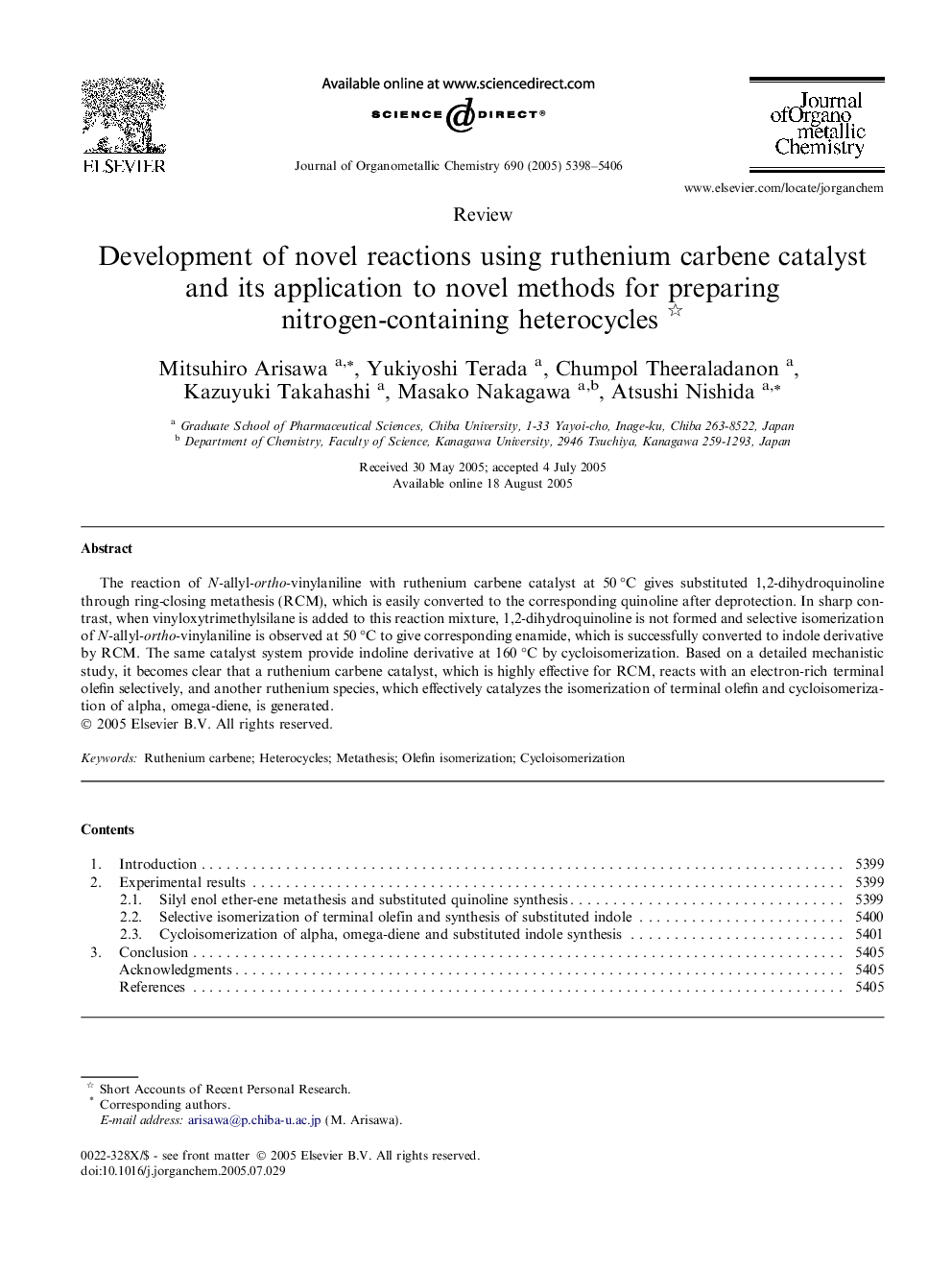| Article ID | Journal | Published Year | Pages | File Type |
|---|---|---|---|---|
| 1326049 | Journal of Organometallic Chemistry | 2005 | 9 Pages |
The reaction of N-allyl-ortho-vinylaniline with ruthenium carbene catalyst at 50 °C gives substituted 1,2-dihydroquinoline through ring-closing metathesis (RCM), which is easily converted to the corresponding quinoline after deprotection. In sharp contrast, when vinyloxytrimethylsilane is added to this reaction mixture, 1,2-dihydroquinoline is not formed and selective isomerization of N-allyl-ortho-vinylaniline is observed at 50 °C to give corresponding enamide, which is successfully converted to indole derivative by RCM. The same catalyst system provide indoline derivative at 160 °C by cycloisomerization. Based on a detailed mechanistic study, it becomes clear that a ruthenium carbene catalyst, which is highly effective for RCM, reacts with an electron-rich terminal olefin selectively, and another ruthenium species, which effectively catalyzes the isomerization of terminal olefin and cycloisomerization of alpha, omega-diene, is generated.
Graphical abstractSecond generation Grubbs ruthenium carbene catalyst, which is highly effective for ring-closing metathesis (RCM), reacts with an electron-rich terminal olefin selectively, and another ruthenium species, which effectively catalyzes the isomerization of terminal olefin and cycloisomerization of alpha, omega-diene, is generated.Figure optionsDownload full-size imageDownload as PowerPoint slide
